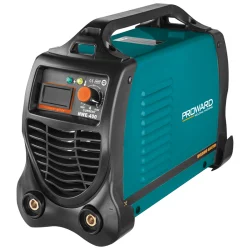Types of Welding Equipment
2023-12-18
Welding equipment encompasses a variety of tools and machinery used in the process of joining materials, typically metals, through the application of heat and pressure. Different welding processes require specific equipment to achieve efficient and high-quality welds. Here are some common types of welding equipment:
1. Welding Machine/Power Source:
- Function: Provides the electrical energy needed for welding.
- Types:
- Arc Welding Machines: Produce an electric arc between the electrode and the workpiece.
- Resistance Welding Machines: Use electrical resistance to generate heat for welding.
2. Welding Electrode:
- Function: The electrode conducts the electric current necessary to create the welding arc.
- Types:
- Consumable Electrodes: Used in processes like Shielded Metal Arc Welding (SMAW) or Gas Metal Arc Welding (GMAW).
- Non-Consumable Electrodes: Used in processes like Gas Tungsten Arc Welding (GTAW).
3. Welding Torch or Gun:
- Function: Directs the welding process and delivers the welding arc or filler material to the workpiece.
- Types:
- MIG Welding Torch (GMAW): Feeds the consumable wire electrode.
- TIG Welding Torch (GTAW): Holds the non-consumable tungsten electrode and directs the shielding gas.
4. Welding Gas Cylinder:
- Function: Provides the shielding gas necessary to protect the weld from atmospheric contamination.
- Types:
- Argon, Helium, Carbon Dioxide: Common shielding gases used in various welding processes.
5. Welding Table or Workbench:
- Function: Provides a stable and secure surface for welding.
- Features: May include clamps, fixtures, or slots for securing workpieces.
6. Welding Helmet or Face Shield:
- Function: Protects the welder's eyes and face from arc radiation, sparks, and debris.
- Features: Auto-darkening helmets adjust the lens shade automatically when the welding arc is struck.
7. Welding Gloves and Protective Clothing:
- Function: Shields the welder from heat, sparks, and molten metal.
- Features: Heat-resistant materials, long cuffs, and reinforced palms.
8. Welding Electrode Holder or Clamp:
- Function: Secures the welding electrode during manual welding processes.
- Types: Spring-loaded clamps or magnetic holders.
9. Welding Ground Clamp:
- Function: Ensures a proper electrical ground for the welding circuit.
- Features: Secure attachment to the workpiece for effective grounding.
10. Welding Fume Extractor:
- Function: Removes welding fumes and airborne particles from the welding area to improve air quality.
- Types: Portable or stationary extraction units with filters.
11. Welding Rod Oven:
- Function: Keeps consumable welding rods dry to prevent moisture-related defects in the weld.
- Features: Adjustable temperature control.
12. Welding Positioners and Manipulators:
- Function: Assist in positioning and rotating the workpiece for optimal welding.
- Types: Manual or motorized positioners.
13. Welding Inspection Tools:
- Function: Tools such as weld gauges, calipers, and magnifiers for inspecting and measuring weld quality.
The specific equipment used in welding depends on the welding process (e.g., MIG welding, TIG welding, arc welding) and the type of material being welded. Welding equipment can range from small, portable devices for hobbyists to large, industrial machines for heavy-duty applications. Safety precautions, including proper personal protective equipment (PPE), are crucial when working with welding equipment to ensure the well-being of the welder.



